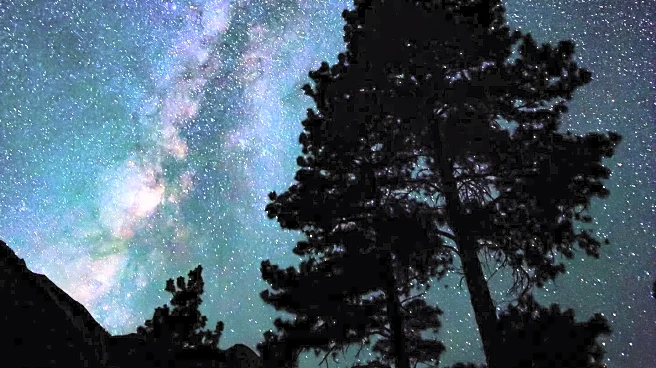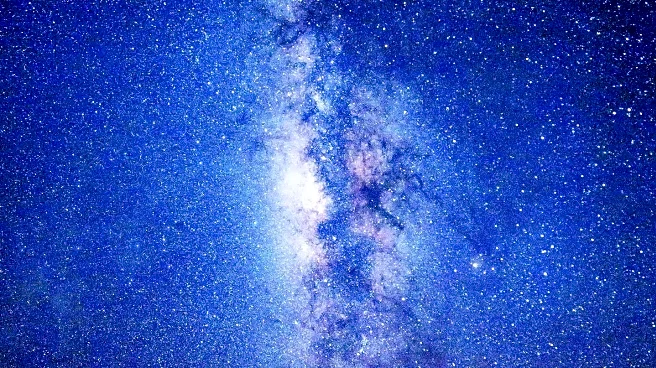What's Happening?
Stargazers in the United States are being encouraged to capture the beauty of the Milky Way galaxy, which is visible from Earth as a faint band of light. The best time to view the Milky Way in the Northern Hemisphere, including the U.S., is from March to September, particularly on clear nights with a new moon. Andrew West, a visuals journalist, has shared tips for photographing the Milky Way, emphasizing the importance of finding dark sky locations and using proper camera settings. His work has gained popularity online, showcasing stunning images of the galaxy from Florida.
Why It's Important?
The ability to view and photograph the Milky Way offers a unique opportunity for amateur astronomers and photographers to engage with the natural world. This activity not only promotes interest in astronomy but also highlights the importance of preserving dark sky areas free from light pollution. As urbanization increases, such experiences become rarer, making efforts to protect these environments crucial for future generations. Additionally, the popularity of Milky Way photography can boost local tourism in areas known for their dark skies.
What's Next?
As interest in Milky Way photography grows, more communities may seek designation as dark sky areas to attract tourists and stargazers. This could lead to increased efforts to reduce light pollution and promote environmental conservation. Photographers and astronomy enthusiasts are likely to continue sharing their work online, further raising awareness and appreciation for the night sky.
Beyond the Headlines
The cultural significance of the Milky Way as a subject of photography and observation reflects a broader human fascination with the cosmos. It serves as a reminder of our place in the universe and the importance of preserving natural wonders. The activity also fosters a sense of community among stargazers and photographers who share their experiences and techniques.














